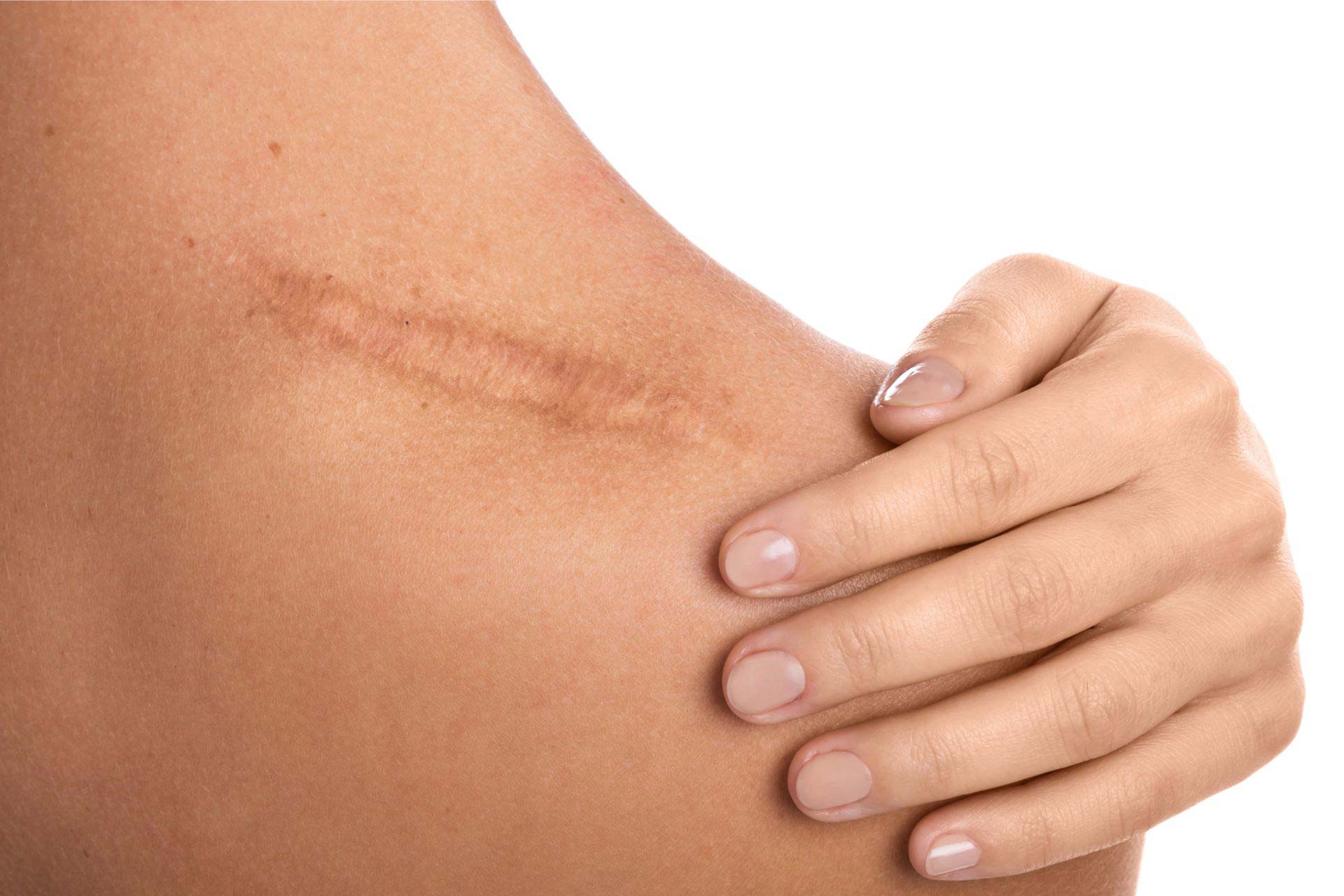Scarring that bothers the person can almost always be treated by surgery. Good aftercare is the key to the best possible result.
Scar revisions are a speciality of plastic surgeons. Scar revisions are most often performed on the face or other visible areas to reduce the cosmetic harm caused by the scar. Scars can be corrected either when they are still very recent or when the wound has already clearly healed.
Book a consultation with a plastic surgeon for scar revision >
Two main types of scar revision
Plastic surgeons typically deal with two types of scars: accident-related scars, which can be either recent or old, and old scars from previous surgery.
The treatments of these two types differ considerably. With recent wounds, it is important to be quick to ensure the best possible outcome. If the scar is old, there is no rush with scar revision. The same rule of thumb applies to burn scars.
Recent scars should be treated immediately
A scar caused by an accident can be treated immediately, preferably within a week or so of the wound occurring. To speed up the start of treatment, the surgeon may ask the person to send pictures of the scar when making the appointment.
First-phase scars are usually not reopened. Instead, an effective course of scar treatment is initiated under the guidance of a plastic surgeon. Treating scars involves massaging the scar, applying ointment, applying silicone tape, and in some cases cortisone injections.
The earlier the appropriate treatment begins, the better the outcome will be. During the first six months, good treatment can make a big difference to the outcome. After that, other approaches, such as surgery, are considered.
Old scars are corrected by surgery
Treatment of older scars starts with a consultation with a plastic surgeon. Scars that the person considers unsightly or functionally limiting can almost always be treated.
A scar is considered old when several months or years have passed since the accident or surgery. The consultation includes an examination of the scar, appropriate treatment methods, the realistically achievable outcome, and aftercare. The cost of the operation is also calculated before the surgery.
Size and location of scar determines surgical technique
There are several techniques for correcting scars. Typically, the surgery consists of removing the old scar and closing the wound more neatly.
Usually, unsightly scars are the result of substandard suturing, careless wound closure or neglect of scar care after an accident or surgery. In this case, the scar is reopened and stitched more carefully, and the surgeon provides comprehensive aftercare instructions. Incisions that are carefully designed to match the skin’s texture and careful wound closure help the skin heal faster, giving a more natural result.
Corrective surgery on scars can usually be done under local anaesthetic. More extensive surgery can be done under general anaesthetic, and this is an option that is always available to the patient.
Book a consultation with a plastic surgeon for scar revision >
A tendency to scar overgrowth may affect treatment
An unsightly or otherwise bothersome scar can also be the result of scar overgrowth: a wound that would normally heal well instead develops a thicker, raised scar. This is an abnormal scarring tendency that is beyond the person’s control. There are two types of excessive scar formation. The milder form is called hypertrophic scarring, and the more troublesome type, a thick raised scar, is referred to as a keloid scar.
Scar overgrowth can sometimes be treated by surgery. This is not always an option, however, as a new wound can also scar abnormally. In such cases other treatment options must be sought, and often the emphasis is on careful aftercare of the scar and the use of cortisone injections if appropriate.
Diligent aftercare is an important part of scar revision
To minimise scarring, careful aftercare is crucial. Immediately after surgery, the plastic surgeon will give advice on how to massage the scar, apply ointment to it and also often to apply silicone tape. In some cases, cortisone injections can also be used to prevent excessive scarring. Aftercare requires commitment from the person themselves as well, and should be continued for several months.
Less invasive options in addition to surgery
For certain types of scares, surgery is not always needed. For example, raised scars such as acne scars can be treated effectively by laser. Laser treatment can also help reduce redness caused by scars. For scars with indentations, fat grafting can be helpful. In this procedure, the hollow is filled with fatty tissue from the person’s body. Microneedling or trichloroacetic acid (TCA) peeling can also be used for certain cosmetic problems.
Aiming for a natural, inconspicuous result
Scars mature slowly, and the final result of scar revision can only be seen between six months to a year afterwards. With careful aftercare, the scars will gradually fade. The end result of scar revision is usually less noticeable than the previous scar.
The aim is to fade the scar as much as possible, thereby alleviating any cosmetic or functional problems. The Skin Hospital’s specialists always strive for a natural result that is as inconspicuous as possible.
Book a consultation with a plastic surgeon for scar revision >






